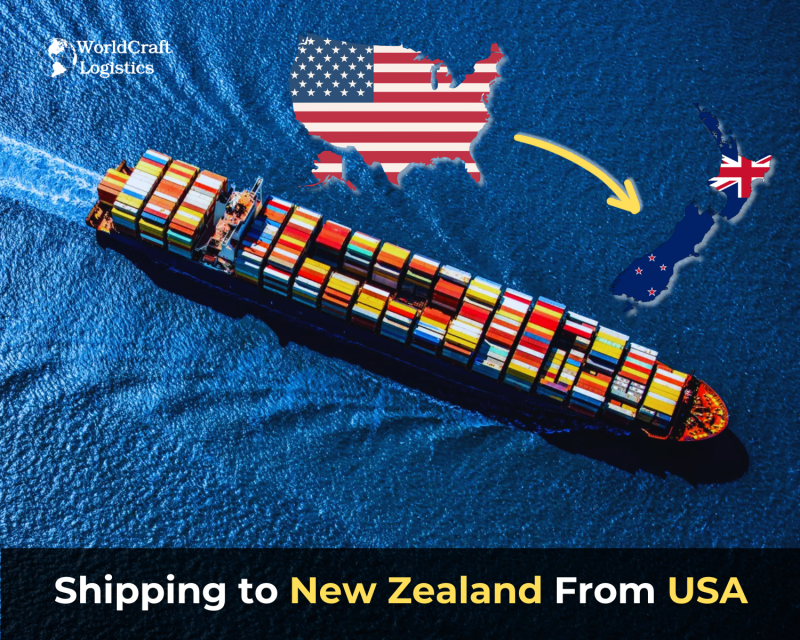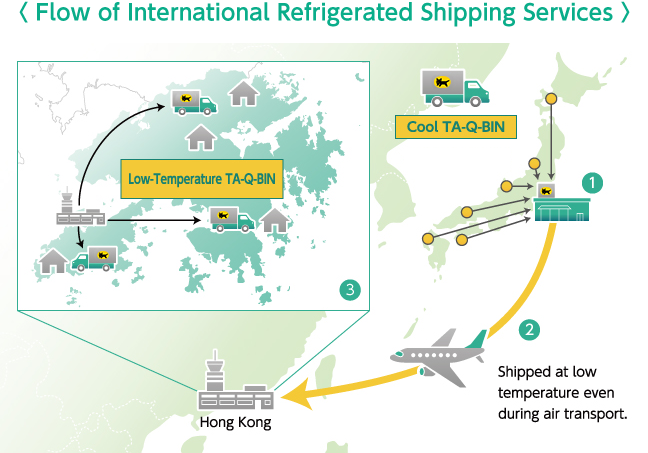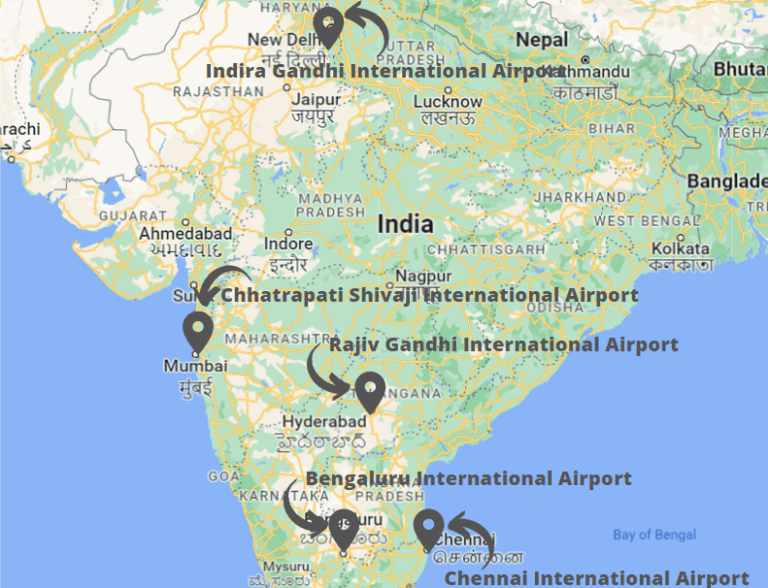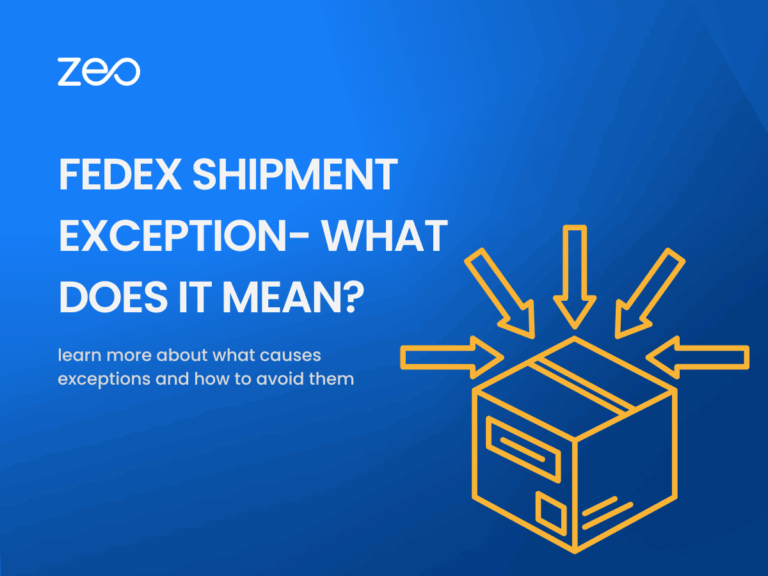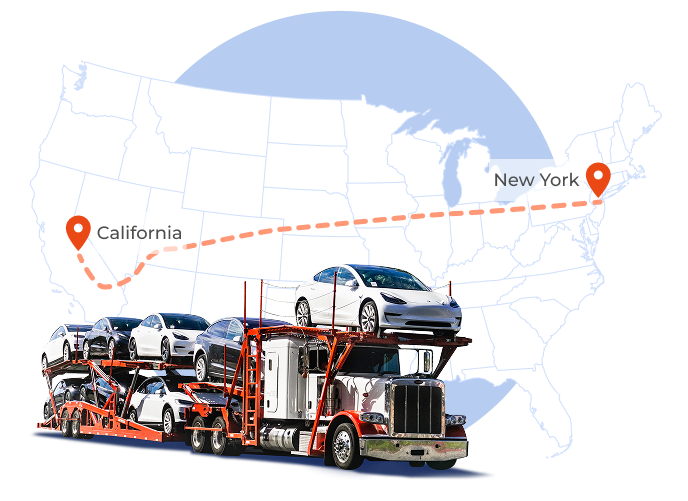Shipping To Nz From Usa: The Ultimate Guide (2025)
Your Complete Guide to shipping to nz from usa
Navigating the Complexities of International Shipping
Shipping goods from the United States to New Zealand presents a unique set of challenges for businesses and entrepreneurs alike. As globalization accelerates, the demand for efficient, reliable shipping solutions has never been greater. However, navigating the intricacies of international logistics can be daunting. From understanding customs regulations to calculating shipping costs, the process often feels overwhelming. The stakes are high—delays can lead to lost sales, increased costs, and damage to your brand’s reputation.
One of the primary hurdles faced by businesses is the diversity of shipping methods available. With options ranging from express courier services to freight shipping, selecting the right method depends not only on budget but also on urgency and the nature of the goods being shipped. Each method comes with its own set of advantages and disadvantages, making it crucial to understand which option aligns best with your shipping goals.
Additionally, shipping costs can vary significantly based on weight, size, and destination, complicating budgeting for international shipments. Businesses must grapple with the need to balance cost-effectiveness with the need for timely delivery. To further complicate matters, customs duties and taxes play a pivotal role in determining the final cost of shipping to New Zealand. Understanding how these are calculated and what items are subject to additional fees can save businesses from unexpected expenses.
Transit times are another critical factor. Depending on the chosen shipping method, delivery times can range from a few days to several weeks. This variability can affect inventory management and customer satisfaction, making it essential to set realistic expectations for delivery timelines.
Furthermore, there are inherent risks associated with international shipping, including potential damage during transit, loss of goods, or issues with customs clearance. Each of these risks requires careful planning and proactive measures to mitigate potential disruptions to the supply chain.
In this comprehensive guide, you will gain expert knowledge on all aspects of shipping from the U.S. to New Zealand. We will delve into various shipping methods, outline expected costs and transit times, and provide insights into customs regulations and duties. By the end, you will be equipped with the practical information necessary to navigate the complexities of international shipping efficiently, ensuring your business can thrive in the global marketplace.
Table of Contents
- Your Complete Guide to shipping to nz from usa
- Understanding Your Shipping Options: A Detailed Comparison
- Deconstructing the Cost: A Full Pricing Breakdown
- Transit Time Analysis: How Long Will It Take?
- Navigating Customs Clearance: A Step-by-Step Guide
- A Practical Guide to Choosing Your Freight Forwarder
- Incoterms 2020 Explained for Shippers
- Risk Management: Identifying and Mitigating Common Shipping Problems
- Frequently Asked Questions (FAQs) for shipping to nz from usa
- Conclusion: Key Takeaways for Successful Shipping
- Important Disclaimer
Understanding Your Shipping Options: A Detailed Comparison
Overview of Shipping Methods to New Zealand from the USA
When considering shipping options from the United States to New Zealand, businesses and shippers have a variety of transportation methods to choose from. Each method has its own unique characteristics in terms of cost, speed, and suitability for different types of shipments. Below is a comparison table that summarizes the key aspects of each shipping method.
| Shipping Method | Best For | Speed | Cost Level | Key Advantages | Key Disadvantages |
|---|---|---|---|---|---|
| Sea FCL | Large shipments, bulk goods | 20-40 days | Low | Economical for heavy loads; large capacity | Longer transit times; port congestion |
| Sea LCL | Smaller shipments, varied goods | 30-60 days | Moderate | Flexible for small volumes; cost-effective | Slower than FCL; potential for delays |
| Air | Time-sensitive shipments | 1-5 days | High | Fastest delivery; reliable tracking | Higher costs; weight restrictions |
| Rail | Domestic transport, intermodal | 5-15 days | Moderate | Eco-friendly; good for heavy goods | Limited to specific regions; slower than air |
| Express | Urgent packages | 1-3 days | Very High | Fast, door-to-door service; premium service | Very expensive; limited weight allowance |
Detailed Breakdown of Each Shipping Method
Sea FCL (Full Container Load)
What It Is:
Shipping via Full Container Load means that an entire container is dedicated to a single shipper’s goods. This method is ideal for large shipments where the volume can fill a container.
When to Use It:
Use FCL when shipping large quantities of goods, as it offers cost efficiency for bulk shipments.
Pros:
– Cost-Effective for Large Shipments: The per-unit cost decreases with larger loads.
– Reduced Risk of Damage: Goods are not mixed with other shipments, minimizing handling.
Cons:
– Longer Transit Times: Typically takes 20-40 days for delivery.
– Requires Port Access: Not suitable for inland destinations without additional transport arrangements.
Sea LCL (Less than Container Load)
What It Is:
LCL shipping allows multiple shippers to share space within a single container. It is suitable for smaller shipments that do not fill an entire container.
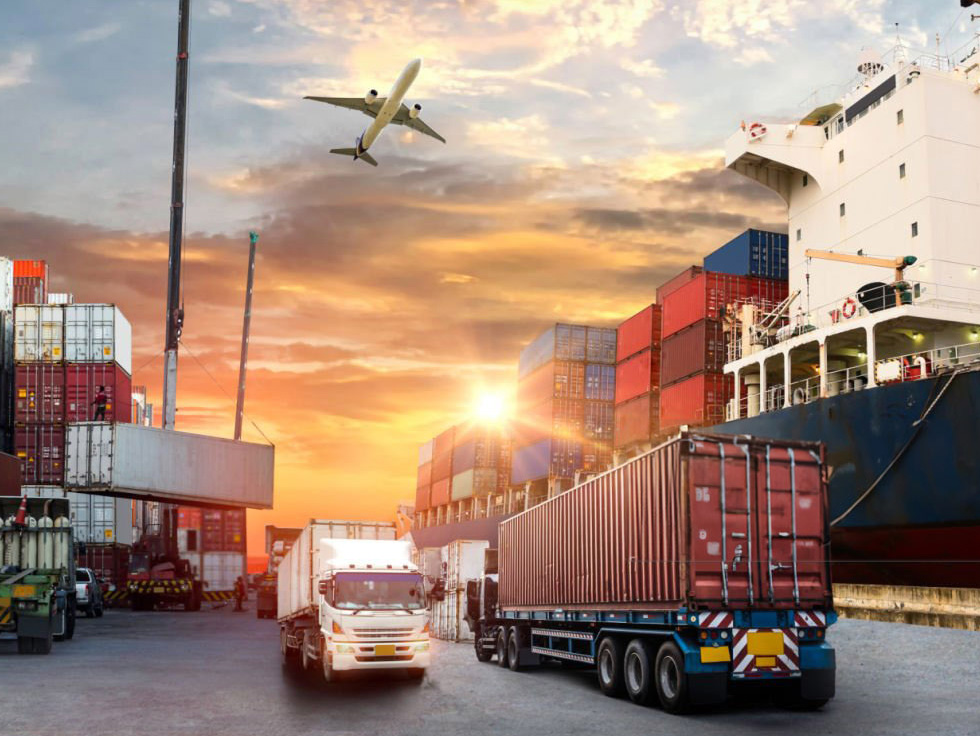
When to Use It:
Use LCL for shipments that are smaller than a full container but still require sea freight.
Pros:
– Flexible: Ideal for shipments of varying sizes without the need for full container space.
– Cost-Effective for Small Loads: Reduces shipping costs for smaller shipments.
Cons:
– Longer Shipping Times: Transit can take 30-60 days due to consolidation and deconsolidation.
– Potential for Delays: Shipments may be delayed due to port congestion or waiting for a full container load.
Air Freight
What It Is:
Air freight involves shipping goods via commercial or cargo aircraft, making it the fastest option available.
When to Use It:
Use air freight for time-sensitive shipments, such as medical supplies or urgent documents.
Pros:
– Speed: Delivery times can range from 1 to 5 days, depending on the destination.
– Reliability: Airlines typically have strict schedules, leading to consistent delivery times.
Cons:
– High Cost: Air freight is significantly more expensive compared to sea freight.
– Weight Restrictions: Often subject to limitations on the weight and size of shipments.
Rail Freight
What It Is:
Rail freight involves transporting goods via trains, primarily used for land-based shipping within specific regions.
When to Use It:
Use rail when shipping domestically within the USA and connecting to ports for international shipping.
Pros:
– Environmentally Friendly: Rail transport emits less CO2 compared to trucking.
– Cost-Effective for Heavy Goods: Efficient for large bulk shipments over land.
Cons:
– Limited Accessibility: Not all locations are accessible by rail, necessitating additional transport.
– Slower Than Air: Transit times can be longer than air freight.
Express Shipping
What It Is:
Express shipping is a premium service that guarantees rapid delivery, often door-to-door.
When to Use It:
Use express shipping for urgent, high-value packages that require immediate delivery.
Pros:
– Fast Delivery: Typically arrives within 1-3 days, ideal for urgent needs.
– Comprehensive Tracking: Provides detailed tracking information throughout the shipment process.
Cons:
– Very High Costs: Significantly more expensive than other shipping methods.
– Limited Weight and Size: Often has strict limits on the dimensions and weight of shipments.
Special Considerations
Multimodal Transport
Multimodal transport combines multiple modes of shipping (e.g., sea and air) into a single shipment. This method can optimize costs and delivery times, depending on the specific needs of the shipper. For example, a shipment could be sent via sea to a transshipment hub and then by air to its final destination in New Zealand. This approach can be particularly beneficial for businesses looking to balance speed and cost.
Specialized Options
- RoRo (Roll-on/Roll-off): This method is used primarily for vehicles and large machinery. Ships are designed to carry wheeled cargo, allowing vehicles to be driven on and off the vessel.
- Break Bulk: This method involves shipping cargo that cannot fit into standard containers. It is often used for oversized or heavy items that require special handling and loading.
Conclusion
Choosing the right shipping method from the USA to New Zealand involves weighing factors such as speed, cost, and shipment size. By understanding the unique advantages and disadvantages of each option, businesses can make informed decisions that align with their logistics needs. Whether you prioritize cost savings with sea freight or need the urgency of air freight, understanding these shipping methods will help streamline your international shipping processes.
Deconstructing the Cost: A Full Pricing Breakdown
Understanding the Cost of Shipping to New Zealand from the USA
Shipping from the USA to New Zealand involves a variety of costs that businesses and individuals must consider. Understanding these cost components can help shippers budget effectively and avoid unexpected expenses. This section outlines the main cost categories associated with international shipping and provides insights into how to manage these costs.
Main Cost Components
When shipping goods internationally, the pricing typically falls into three primary categories:
- Main Freight
- Origin Charges
- Destination Charges
Main Freight
Main freight costs refer to the core expense associated with transporting goods from the origin to the destination country. This cost is influenced by several factors:
- Mode of Transport: Air freight is generally more expensive than sea freight due to the speed of delivery and capacity limitations.
- Weight and Volume: Heavier and larger shipments incur higher freight costs. Shipping companies often charge based on either actual weight or dimensional weight, whichever is greater.
- Distance: The geographical distance between the shipping point in the USA and the destination in New Zealand affects fuel consumption and transit time, which can impact pricing.
- Service Level: Different service levels (e.g., express vs. standard) will also determine the freight cost. Express services come at a premium for faster delivery.
Origin Charges
Origin charges are costs incurred at the shipping origin (the USA). These charges can include:
- Packaging Costs: Proper packaging ensures the safety of goods during transit and may involve additional costs for materials and labor.
- Pickup Fees: If the shipping company is responsible for picking up the shipment, there may be a fee associated with that service.
- Documentation Fees: Preparing necessary shipping documents, such as commercial invoices and export declarations, can incur additional charges.
- Customs Clearance: If the shipment requires customs clearance in the USA before departure, there may be fees for this service.
Destination Charges
Once the shipment arrives in New Zealand, various destination charges may apply. These can include:
- Customs Duties and Taxes: New Zealand imposes customs duties and Goods and Services Tax (GST) on imports. Items valued over NZ$1,000 are subject to a 15% GST, along with applicable duties based on the type of goods.
- Delivery Charges: Costs for transporting goods from the port of entry to the final destination within New Zealand. These can vary based on distance and delivery speed.
- Customs Clearance Fees: Similar to the USA, there may be fees associated with clearing goods through New Zealand customs.
- Storage Fees: If goods are not cleared within a specified period, storage fees may apply.
Detailed Cost Factor Analysis
To provide clarity on how these costs can vary, let’s take a closer look at the factors influencing each component.
Main Freight Cost Factors
- Carrier Choice: Different carriers offer varying rates based on their service offerings, reliability, and network coverage.
- Seasonality: Demand for shipping can fluctuate based on the time of year, impacting rates. Peak seasons may lead to higher costs.
- Fuel Prices: The fluctuating cost of fuel can directly affect freight charges, particularly for air freight.
Origin Charges Cost Factors
- Location: Charges can differ based on the proximity of the pickup location to major shipping hubs.
- Shipment Size: Larger shipments may qualify for bulk discounts, while smaller shipments might incur higher per-unit costs.
- Documentation Complexity: More complex shipments requiring extensive paperwork can increase fees.
Destination Charges Cost Factors
- Customs Classification: The classification of goods under New Zealand customs can impact the duty rates applied.
- Import Regulations: Changes in import regulations or tariffs can affect the total cost of importation.
- Local Delivery Options: Availability of delivery services and competition in the local market can influence final delivery charges.
Example Pricing Table
The table below provides a sample pricing breakdown for shipping options. Please note that these are estimates and can vary based on specific circumstances.
| Shipping Mode | 20ft Container | 40ft Container | LCL (per cubic meter) | Air Freight (per kg) |
|---|---|---|---|---|
| Sea Freight | $1,500 – $3,000 | $2,500 – $4,500 | $150 – $250 | N/A |
| Air Freight | N/A | N/A | N/A | $5 – $10 |
Disclaimer: The prices listed above are estimates based on average shipping costs and may vary significantly depending on the shipping provider, specific routes, and real-time market conditions.
How to Reduce Costs
For businesses looking to optimize their shipping expenses to New Zealand, consider the following actionable tips:
- Consolidate Shipments: Combining multiple orders into one shipment can help reduce overall shipping costs and take advantage of bulk rates.
- Compare Carriers: Use multiple shipping quotes to find the most cost-effective carrier and service level for your needs.
- Optimize Packaging: Ensure that your packaging is efficient and minimizes dimensional weight to avoid unnecessary charges.
- Utilize Technology: Leverage online tools and software for accurate cost estimations and tracking to manage shipments more efficiently.
- Plan Shipments Wisely: Avoid peak shipping seasons when costs are likely to rise. Planning ahead can lead to significant savings.
- Negotiate Rates: If you are a frequent shipper, negotiate better rates with carriers based on your shipping volume.
- Understand Customs Regulations: Familiarize yourself with New Zealand’s import regulations to avoid unexpected duties and taxes.
By understanding the various cost components and implementing these cost-saving strategies, businesses can effectively manage their shipping expenses to New Zealand from the USA.
Transit Time Analysis: How Long Will It Take?
Understanding Transit Times for Shipping to New Zealand from the USA
When planning shipments to New Zealand from the USA, understanding transit times is crucial for effective logistics management. Various factors can significantly influence how long it takes for your goods to reach their destination.
Factors Influencing Transit Time
-
Shipping Mode: The choice between air freight and sea freight is one of the most significant factors affecting transit time. Air freight is generally faster, with typical transit times ranging from 3 to 10 days, depending on the specific route and service level chosen. Conversely, sea freight is more economical but can take anywhere from 20 to 40 days or more, depending on the shipping line and route.
-
Port Congestion: Ports in both the USA and New Zealand can experience congestion, which can delay the loading and unloading of vessels. Factors such as high shipping volumes, labor strikes, or adverse weather conditions can exacerbate port congestion.
-
Customs Clearance: Customs procedures in New Zealand can also impact transit times. While most shipments pass through customs smoothly, any discrepancies in documentation or issues with compliance can lead to delays. It is essential to prepare all necessary paperwork, including invoices, packing lists, and any required permits, to facilitate a swift customs clearance process.
-
Shipping Routes: The specific shipping route taken can influence transit times. Direct routes will generally be faster than those that require transshipment or stopovers at multiple ports.
-
Weather Conditions: Adverse weather can cause delays in both air and sea freight. Seasonal weather patterns, such as cyclones or heavy storms, may lead to shipping disruptions or delays at ports.
Estimated Transit Time Table
Below is a table outlining realistic transit time estimates for shipping from the USA to New Zealand, considering both air and sea freight options.
| Origin | Destination | Sea Freight (Days) | Air Freight (Days) |
|---|---|---|---|
| Los Angeles, CA | Auckland, NZ | 30-40 | 5-10 |
| San Francisco, CA | Wellington, NZ | 30-40 | 5-10 |
| Seattle, WA | Christchurch, NZ | 30-40 | 5-10 |
| New York, NY | Auckland, NZ | 30-45 | 7-12 |
| Miami, FL | Wellington, NZ | 35-45 | 7-12 |
Context and Explanation
The estimates provided in the table represent typical port-to-port transit times. For example, shipping from Los Angeles to Auckland via sea freight may take around 30 to 40 days, while the same route via air freight could take approximately 5 to 10 days. It’s important to note that these estimates do not include additional time for customs clearance, last-mile delivery, or potential delays caused by port congestion or adverse weather conditions.
When planning shipments, businesses should account for these additional factors to avoid unexpected delays. It’s advisable to build in extra time for customs clearance, which can vary depending on the shipment type and value. Additionally, businesses should stay informed about current shipping conditions and potential disruptions, as these can affect transit times significantly.
In conclusion, understanding the various factors that influence transit times is essential for optimizing shipping operations to New Zealand. By carefully considering shipping modes, routes, and potential delays, businesses can better manage their logistics and ensure timely deliveries to their customers in New Zealand.
Navigating Customs Clearance: A Step-by-Step Guide
The Process Explained
Navigating customs clearance can be intricate, especially when shipping goods from the U.S. to New Zealand. Here’s a step-by-step guide to ensure your shipment clears customs smoothly:
-
Prepare Your Shipment: Before shipping, ensure that your items comply with New Zealand’s import regulations. Verify that none of the items are prohibited or restricted, and determine if they require any special permits.
-
Gather Required Documentation: Collect all necessary documents that will accompany your shipment. These are crucial for customs clearance and will include the Commercial Invoice, Packing List, and Bill of Lading.
-
Complete Customs Declarations: Fill out the appropriate customs declarations, which may include an Import Entry. This declaration details the nature, value, and purpose of your shipment.
-
Calculate Duties and Taxes: Understand the duties and taxes applicable to your goods. This includes Goods and Services Tax (GST) and any import duties. Use tools such as the Landed Cost Estimator to calculate these costs in advance.
-
Submit Documentation: Send your customs documentation electronically or physically to New Zealand Customs. Ensure that all forms are filled out accurately to avoid delays.
-
Await Customs Clearance: Once submitted, your shipment will be reviewed by customs officials. This process typically takes a few days, but it can vary depending on the volume of imports and the specifics of your shipment.
-
Receive Your Goods: After clearance, your shipment will be released for delivery. If there are any issues, customs will notify you, and you may need to provide additional information or pay outstanding duties.
Essential Documentation
Proper documentation is essential for ensuring a smooth customs clearance process. Here are the key documents you will need:
-
Commercial Invoice: This is a detailed document that outlines the sale transaction between the seller and buyer. It should include information such as the seller’s and buyer’s addresses, a description of the goods, their value, and terms of sale.
-
Packing List: This document provides a detailed breakdown of the contents of your shipment. It should list each item, its quantity, and any relevant packaging information (like dimensions and weight). This helps customs officials verify the contents against the Commercial Invoice.
-
Bill of Lading (BOL): This is a legal document between the shipper and carrier that outlines the details of the shipment. It serves as a receipt for the goods and a contract for transportation.
-
Import Entry: This is a form submitted to New Zealand Customs that provides detailed information about the imported goods. It must be completed within 20 days of arrival in New Zealand.
-
Certificates of Origin or Compliance (if applicable): Depending on the nature of your goods, additional certificates may be required to verify the origin or compliance with specific regulations.
Duties, Taxes, and HS Codes
Understanding how duties and taxes are calculated is crucial for accurate budgeting and compliance.
-
HS Codes: Harmonized System (HS) Codes are internationally standardized numbers that classify traded products. These codes are essential for determining the applicable duties and taxes for your shipment. Each product has a unique HS Code that corresponds to its classification in customs regulations.
-
Duties and Taxes Calculation: In New Zealand, goods valued at NZ$1,000 or less are exempt from duties and GST, except for alcohol and tobacco. For items above this threshold, a 15% GST is typically applied, along with any applicable import duties based on the HS Code. The duty rate can vary significantly depending on the nature of the goods and their origin.
Common Problems & Solutions
Navigating customs can be fraught with challenges. Here are common issues faced during customs clearance and how to avoid them:
-
Incomplete Documentation: Missing or incorrect documentation can lead to delays.
Solution: Double-check all documents before submission. Ensure that every required form is complete and accurate. -
Misclassification of Goods: Incorrect HS Codes can result in unexpected duties or even fines.
Solution: Research and confirm the correct HS Code for your products. Consult with customs experts or use official resources to ensure accuracy. -
Failure to Declare Goods Properly: Under-declaring the value of goods can lead to penalties.
Solution: Always declare the accurate value of your goods as per the Commercial Invoice. Transparency is key to avoiding fines. -
Customs Holds Due to Prohibited Items: Some items may be restricted or prohibited, leading to holds.
Solution: Familiarize yourself with New Zealand’s import restrictions and ensure that none of your items fall under these categories before shipping. -
Delays Due to Non-Payment of Duties and Taxes: Not paying duties on time can lead to additional fees and delays.
Solution: Calculate and pay all applicable duties and taxes promptly upon receiving the customs notification.
By following these guidelines and preparing adequately, you can streamline your customs clearance process when shipping from the U.S. to New Zealand, ensuring timely delivery and compliance with all regulations.
A Practical Guide to Choosing Your Freight Forwarder
Understanding the Importance of a Freight Forwarder
When shipping goods from the USA to New Zealand, selecting the right freight forwarder is pivotal to ensuring a seamless logistics process. A freight forwarder acts as an intermediary between you and various transportation services, managing the complexities of international shipping, customs clearance, and documentation. Choosing a reliable partner can save time, reduce costs, and mitigate risks.
Key Qualities to Look for in a Freight Forwarder
-
Experience and Expertise: Choose a freight forwarder with substantial experience in shipping to New Zealand. They should be familiar with the specific regulations, customs requirements, and market conditions in both the USA and New Zealand. A seasoned forwarder can provide valuable insights and advice throughout the shipping process.
-
Global Network: A well-established freight forwarder should have a robust global network, including partnerships with carriers and agents in both the USA and New Zealand. This network is crucial for negotiating better rates and ensuring timely deliveries.
-
Licensing and Compliance: Ensure that your chosen freight forwarder is properly licensed and complies with international shipping regulations. This includes having the necessary certifications such as the Federal Maritime Commission (FMC) license for shipping from the USA and compliance with New Zealand’s import regulations.
-
Effective Communication: A successful shipping experience hinges on clear and timely communication. Your freight forwarder should provide regular updates on shipment status, respond promptly to inquiries, and be proactive in addressing any potential issues.
-
Customs Expertise: Customs clearance can be one of the most complex aspects of international shipping. Your forwarder should have expertise in customs regulations, including tariffs, duties, and documentation requirements specific to New Zealand.
-
Technology Integration: Look for a freight forwarder that utilizes modern technology for tracking shipments, managing documentation, and providing real-time updates. Effective use of technology can enhance efficiency and transparency in the shipping process.
Sourcing Checklist for Selecting a Freight Forwarder
To streamline your selection process, follow this actionable checklist:
-
Define Your Shipping Needs: Determine the specifics of your shipment, including the types of goods, volume, frequency of shipping, and any special handling requirements. This clarity will help you find a forwarder that meets your specific needs.
-
Research Potential Freight Forwarders: Utilize online resources, industry directories, and recommendations from peers to compile a list of potential freight forwarders. Pay attention to those who have experience shipping to New Zealand.
-
Request Quotes: Reach out to shortlisted freight forwarders for detailed quotes. Ensure you provide them with all relevant information about your shipment to receive accurate estimates. Compare the quotes based on cost, services offered, and delivery timelines.
-
Ask Questions: Don’t hesitate to ask potential forwarders questions regarding their experience, services, handling of customs, insurance options, and tracking capabilities. Understanding their approach to challenges will give you insight into their operational effectiveness.
-
Check References: Before making a final decision, ask for references from previous clients. Contact these references to inquire about their experiences with the freight forwarder, focusing on reliability, communication, and overall satisfaction.
Red Flags to Watch For
While evaluating freight forwarders, be vigilant for the following warning signs that may indicate a potential issue:
-
Lack of Transparency: If a forwarder is unwilling to provide detailed information about their services, pricing, or processes, consider this a red flag. Transparency is key to a successful partnership.
-
Poor Communication: If initial communications are slow or vague, this may be indicative of their overall service level. A good freight forwarder should be responsive and clear in their communication.
-
Limited Experience with New Zealand: Avoid forwarders without significant experience or references for shipping to New Zealand. Lack of familiarity with local regulations can lead to costly delays or complications.
-
No Licensing or Certification: Ensure that the forwarder can provide proof of their licensing and compliance with relevant shipping regulations. A lack of proper documentation could lead to legal issues.
-
Negative Reviews or Complaints: Research online reviews and check for any complaints against the forwarder. A pattern of negative feedback should raise concerns about their reliability and service quality.
Conclusion
Choosing the right freight forwarder for shipping from the USA to New Zealand is a critical decision that can impact your business operations significantly. By focusing on essential qualities, following a systematic sourcing checklist, and being aware of potential red flags, you can select a freight forwarder that not only meets your shipping needs but also enhances your overall logistics strategy. With the right partner, you can navigate the complexities of international shipping with confidence.
Incoterms 2020 Explained for Shippers
Understanding Incoterms for International Shipping
Incoterms, short for International Commercial Terms, are a set of globally recognized rules that define the responsibilities of buyers and sellers in international trade. Established by the International Chamber of Commerce (ICC), these terms facilitate clear communication and understanding in contracts, especially regarding shipping logistics, costs, and risks. For businesses shipping from the USA to New Zealand, understanding Incoterms is crucial for ensuring smooth transactions and avoiding unexpected costs.
Key Incoterms Table
| Incoterm | Who Pays for Transport? | Where Risk Transfers? | Best for |
|---|---|---|---|
| EXW (Ex Works) | Buyer | At the seller’s premises | Buyers looking for complete control |
| FOB (Free on Board) | Seller | When goods are loaded onto the vessel | Buyers with reliable shipping partners |
| CIF (Cost, Insurance, and Freight) | Seller | When goods pass the ship’s rail at the port of shipment | Buyers wanting cost and risk managed by the seller |
| DDP (Delivered Duty Paid) | Seller | At the buyer’s location | Buyers wanting a hassle-free delivery |
Detailed Explanation of Incoterms
EXW (Ex Works)
Under the EXW term, the seller has minimal responsibility. The seller makes the goods available at their premises or another named place. The buyer assumes all risks and costs associated with transporting the goods from that point onward. This term is best suited for buyers who want complete control over the shipping process and are familiar with the logistics involved. For example, a U.S. manufacturer shipping machinery to New Zealand might quote an EXW price, leaving the buyer to arrange and pay for all transportation and customs handling.
FOB (Free on Board)
FOB indicates that the seller is responsible for costs and risks until the goods are loaded onto the vessel at the port of shipment. Once the goods are on board, the risk transfers to the buyer. This term is commonly used for ocean freight and is advantageous for buyers who have established relationships with freight forwarders. For instance, if a New Zealand importer purchases furniture from a U.S. supplier under FOB terms, the supplier will cover transportation costs to the port and loading. After that, the importer is responsible for shipping and insurance.
CIF (Cost, Insurance, and Freight)
CIF means that the seller covers the costs, insurance, and freight necessary to bring the goods to the destination port. The risk transfers to the buyer once the goods pass the ship’s rail at the port of shipment. This term is beneficial for buyers who prefer to have the seller manage the shipping logistics and insurance. For example, when a U.S. electronics company sells products to a retailer in New Zealand under CIF terms, the seller will arrange and pay for shipping and insurance to the New Zealand port, simplifying the process for the buyer.
DDP (Delivered Duty Paid)
DDP places the maximum responsibility on the seller, who must deliver the goods to the buyer’s location, covering all costs, including import duties and taxes. The risk remains with the seller until the goods are delivered to the buyer’s premises. This term is ideal for buyers who want a straightforward purchasing experience without worrying about customs clearance or additional fees. For example, a U.S. exporter shipping clothing to a New Zealand retailer under DDP terms would handle everything from transportation to customs duties, ensuring the retailer receives the goods ready for sale.
Conclusion
In summary, understanding Incoterms is essential for businesses involved in international shipping, particularly when moving goods from the USA to New Zealand. By selecting the appropriate Incoterm, shippers can clearly define responsibilities, manage costs effectively, and reduce the risk of unexpected complications during transit. Choosing the right term can lead to smoother transactions and better business relationships across borders.
Risk Management: Identifying and Mitigating Common Shipping Problems
Introduction
In the world of international shipping, proactive risk management is crucial for ensuring smooth operations and safeguarding investments. The process of shipping goods from the U.S. to New Zealand involves navigating a myriad of potential challenges, including customs regulations, cargo damage, and logistical delays. By identifying and mitigating these risks before they arise, businesses can not only streamline their shipping processes but also enhance their overall operational efficiency. Effective risk management minimizes disruptions, protects financial interests, and fosters better relationships with customers and partners.
Risk Analysis Table
To assist international shippers, importers, and exporters, we have compiled a risk analysis table that outlines common shipping problems, their potential impacts, and effective mitigation strategies.
| Potential Risk | Impact | Mitigation Strategy |
|---|---|---|
| Cargo Damage | Loss of product value, customer dissatisfaction | Invest in high-quality packaging materials and techniques. Conduct regular training for staff on proper handling procedures to minimize the risk of damage. |
| Delays | Increased shipping costs, missed deadlines | Utilize reputable carriers with a proven track record for timely deliveries. Monitor shipping status closely and maintain open communication with logistics partners. |
| Customs Holds | Financial penalties, delayed delivery | Ensure compliance with all customs regulations by preparing accurate documentation. Familiarize yourself with New Zealand’s import restrictions and requirements. |
| Incorrect Addressing | Return shipments, increased costs | Implement a double-check system for address verification. Use software tools that validate addresses against postal standards in New Zealand. |
| Regulatory Changes | Non-compliance fines, shipment rejections | Stay updated on trade regulations and customs policies in both the U.S. and New Zealand. Subscribe to industry newsletters or utilize services that provide alerts on regulatory changes. |
Cargo Insurance Explained
Cargo insurance is a vital component of risk management when shipping goods internationally. It provides coverage for loss or damage to cargo during transit, offering peace of mind to shippers and ensuring financial protection against unforeseen events.
Coverage
Cargo insurance typically covers a wide range of risks, including:
- Theft: Protection against loss due to theft during transit.
- Damage: Coverage for physical damage to the cargo, whether from accidents, weather conditions, or mishandling.
- Loss: Compensation for goods that are lost in transit, whether due to accidents or shipping errors.
Types of Cargo Insurance
- All-Risk Insurance: This is the most comprehensive form of cargo insurance, covering all risks of loss or damage unless specifically excluded in the policy.
- Named Perils Insurance: This type covers only the risks explicitly listed in the policy, such as fire, theft, or collision.
- Total Loss Insurance: This covers the total loss of goods, typically used for high-value items.
Importance of Cargo Insurance
Investing in cargo insurance is essential for several reasons:
- Financial Protection: It safeguards businesses against significant financial loss from damaged or lost goods.
- Peace of Mind: Knowing that goods are insured allows businesses to focus on their operations without the constant worry of potential losses.
- Customer Trust: Offering insured shipments can enhance customer confidence, as clients feel secure knowing their products are protected.
Conclusion
In conclusion, effective risk management is a cornerstone of successful shipping operations from the U.S. to New Zealand. By identifying potential risks such as cargo damage, delays, customs holds, and regulatory changes, businesses can develop robust mitigation strategies that protect their interests. Additionally, securing cargo insurance provides an added layer of security, ensuring that financial losses are minimized in the event of unforeseen circumstances. By taking these proactive steps, businesses can enhance their shipping processes, build stronger relationships with clients, and ultimately drive growth in international markets.
Frequently Asked Questions (FAQs) for shipping to nz from usa
Frequently Asked Questions about Shipping to New Zealand from the USA
-
What are the shipping options available for sending packages to New Zealand from the USA?
There are several shipping options available, including express services like DHL Express and UPS, as well as standard shipping methods. The choice of service will depend on your budget, the urgency of the shipment, and the size and weight of your package. Express services typically offer faster delivery times but at a higher cost, while standard shipping may take longer but is more economical. -
How can I calculate shipping costs for my package to New Zealand?
Shipping costs are calculated based on several factors, including the weight and dimensions of the package, the chosen shipping service, and any additional services (such as insurance or tracking). Most carriers provide online calculators where you can input these details to get an instant quote. -
What are the customs duties and taxes for shipments sent to New Zealand?
Shipments to New Zealand may incur Goods and Services Tax (GST) and customs duties, which are determined based on the item type, declared value, and the country of origin. Items valued at NZ$1,000 or less are generally exempt from these charges, except for alcohol and tobacco. For items over this threshold, a 15% GST and applicable duties will apply. -
What is the difference between a Bill of Lading (BOL) and an Air Waybill (AWB)?
A Bill of Lading (BOL) is a document used for shipping goods by sea, providing details about the cargo and the terms of transportation. An Air Waybill (AWB) is used for air shipments and serves a similar purpose but is specific to air freight. Both documents are crucial for tracking shipments and facilitating customs clearance. -
Are there restrictions on what can be shipped to New Zealand?
Yes, New Zealand has strict customs regulations. Prohibited items include firearms, certain agricultural products, and materials deemed objectionable. Additionally, some items may require special permits or documentation. Always check the New Zealand Customs Service website for the latest regulations before shipping. -
How long does shipping to New Zealand typically take?
Shipping times vary depending on the service selected. Express services can deliver within 1-3 business days, while standard shipping may take anywhere from 5 to 10 business days. Factors such as customs clearance and destination within New Zealand can also affect delivery times. -
What should I do if my shipment requires customs clearance in New Zealand?
If your shipment requires customs clearance, you must ensure that an Import Entry is completed within 20 days of arrival. You may incur bond storage charges if the shipment is not cleared within 3 business days. Providing accurate documentation and contact details will help avoid delays and additional fees. -
How can I track my shipment to New Zealand?
Most shipping carriers offer tracking services that allow you to monitor your shipment’s status. You can track your package online using the tracking number provided at the time of shipping. For businesses, many carriers also offer API integrations for real-time tracking updates. -
What is chargeable weight, and how is it calculated for shipments to New Zealand?
Chargeable weight is the weight used by carriers to determine shipping costs and can be based on either the actual weight or the volumetric weight, whichever is greater. To calculate volumetric weight, you multiply the dimensions of the package (length x width x height) and divide by a volumetric divisor, typically 5,000 for air freight. -
Can I ship personal items to New Zealand without incurring duties?
Personal items valued at NZ$1,000 or less can be sent without incurring duties or GST, except for specific categories like alcohol and tobacco. However, if multiple packages from the same supplier arrive on the same day and their total value exceeds this threshold, customs may classify them as a single shipment, which could incur charges. Always declare your items accurately to avoid complications.
Conclusion: Key Takeaways for Successful Shipping
Effective Planning is Essential
Shipping from the USA to New Zealand requires thorough planning to ensure a smooth process. Begin by understanding the specific customs regulations and restrictions that apply to your products. Familiarize yourself with the duties and taxes involved, particularly the GST and any exemptions for lower-value shipments. Proper documentation is crucial; ensure all required paperwork is completed accurately to avoid delays.
Choose the Right Shipping Partner
Selecting a reliable shipping partner can significantly impact the efficiency of your shipping operations. Major logistics providers such as DHL and UPS offer comprehensive services tailored for international shipments, including real-time tracking and customs expertise. Leverage their resources to streamline your shipping process and gain access to valuable tools like landed cost estimators to predict total shipping expenses.
Cost Management and Transparency
Shipping costs can vary greatly based on factors such as package size, weight, and service speed. Utilize online quoting tools from your chosen logistics provider to compare rates and delivery times, helping you find the best option for your business needs. Be proactive in budgeting for potential duties and taxes, keeping in mind that items valued over NZ$1000 will incur additional fees.
Final Thoughts
As you embark on your shipping journey to New Zealand, remember that careful planning, choosing the right logistics partner, and understanding cost implications are key to a successful shipping experience. Stay informed about the latest regulations and market trends to adapt your strategy as needed.
Take the next step in your shipping endeavors today. Connect with logistics experts, explore various shipping options, and optimize your processes to ensure your goods reach New Zealand efficiently and cost-effectively. Your international shipping success starts with informed decisions!
Important Disclaimer
⚠️ Important Disclaimer
The information in this guide is for educational purposes only and does not constitute professional logistics advice. Rates, times, and regulations change frequently. Always consult with a qualified freight forwarder for your specific needs.
